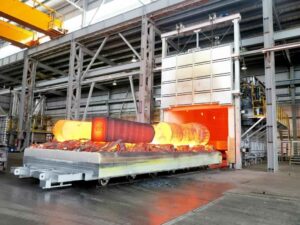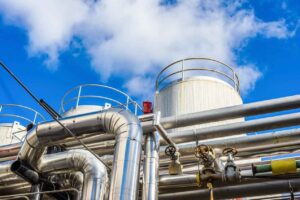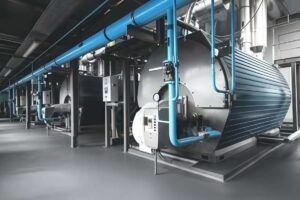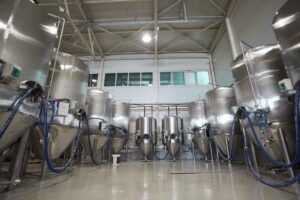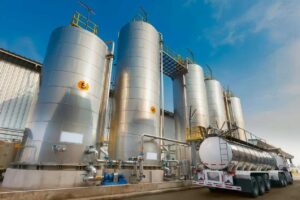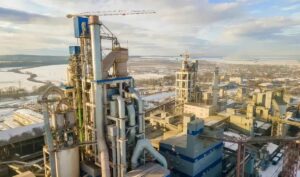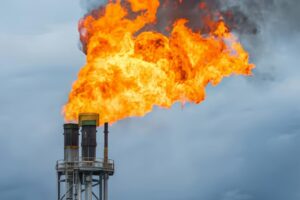Tunable Diode Laser Absorption Spectroscopy (TDLAS) is an infrared absorption spectrum analysis technology that uses the principle of “frequency-selective” absorption of molecules to form an absorption spectrum to achieve high-resolution quantitative analysis of molecular concentration. TDLAS is capable of in-situ non-contact measurement and has the characteristics of high precision and high selectivity.
Combined with noise suppression technologies such as wavelength modulation spectroscopy (WMS) and lock-in amplification, it can achieve ppm or even ppb levels of trace gas molecules. Concentration measurement. This article will delve into the principles, applications, characteristics and advantages of laser gas analyzers over other types of analyzers.
The Principle of TDLAS Gas Analyzer
1. Lambert-Beer Law
TDLAS technology is a high-resolution spectral absorption technology. The light intensity attenuation of the semiconductor laser passing through the measured gas can be expressed by the Lambert-Beer law. In the formula, IV, 0 and IV respectively represent the laser with frequency V. The light intensity when incident and after passing through the gas with pressure P, concentration X and optical path L; S (T) represents the intensity of the gas absorption line; the linear function g (v-v0) represents the shape of the absorption line. Gas absorption is generally small, and these relationships indicate that the higher the gas concentration, the greater the attenuation of light. Therefore, the concentration of a gas can be measured by measuring the attenuation of the laser by the gas.

2. Line Intensity of Spectral Lines
The absorption of gas molecules is always related to the energy level transition from a low energy state to a high energy state within the molecule. Line intensity S (T) reflects the net effect between the intensity of stimulated absorption, stimulated emission and spontaneous emission during the transition process. It is the most basic attribute of the absorption spectrum line. It is determined by the transition probability between energy levels and at the upper and lower energy levels. Determined by the number of molecules. The distribution of molecules between different energy levels is affected by temperature, so the line intensity of spectral lines is also related to temperature.

The Measurement Technology of TDLAS Gas Analyzer
Modulated Spectrum Detection Technology
Modulated spectrum detection technology is the most widely used TDLAS technology that can achieve higher detection sensitivity. It analyzes the absorption of the gas by rapidly modulating the laser frequency to sweep across a fixed frequency range of the absorption spectrum line of the gas being measured, and then using phase-sensitive detection technology to measure the harmonic components in the transmission spectrum line after being absorbed by the gas.
There are two types of modulation schemes: external modulation and internal modulation. The external modulation scheme uses an electro-optical modulator outside the semiconductor laser to achieve modulation of the laser frequency. The internal modulation scheme achieves the modulation of the laser frequency by directly changing the injection working current of the semiconductor laser. modulation. Due to the convenience of use, the internal modulation scheme is more widely used. Its measurement principle is briefly described below.
While the laser frequency sweeps across the gas absorption spectrum line, the laser operating current is modulated with a higher frequency sinusoidal modulation. The instantaneous laser frequency can be expressed as: where, (t) represents the low-frequency scan of the laser frequency; a is the sinusoidal modulation The amplitude of the frequency change produced; w is the sinusoidal modulation frequency. The transmitted light intensity can be expressed in the form of the following Fourier series.
Harmonic components can be detected using phase sensitive detectors (PSD). Modulated spectroscopy technology significantly reduces the impact of laser optical noise (1/f noise) on measurement through high-frequency modulation. At the same time, a very narrow-bandwidth bandpass filter can be obtained by setting a larger time constant for PSD, thereby effectively compressing Noise bandwidth. Therefore, modulated spectroscopy technology can achieve better detection sensitivity.
Measurement Steps
The principle of laser gas analyzer is based on the principles of laser spectroscopy and optical absorption. Its working process can be divided into the following key steps:
- Laser source:Laser gas analyzers use a monochromatic, coherent laser beam as the light source. The characteristics of the laser beam enable it to be highly focused and directed.
- Sample gas:The gas sample to be analyzed is introduced into the analyzer through a gas chamber or gas line.
- Optical absorption:A laser beam passes through a sample gas, and laser photons of specific wavelengths are absorbed by molecules in the gas. The number of photons absorbed is proportional to the concentration of target molecules in the gas.
- detector:The detector measures the number of unabsorbed photons in the outgoing beam, and this signal is related to the concentration of target molecules in the gas.
- data processing:The analyzer determines the concentration of the target molecule by calculating the ratio of absorbed light intensity to unabsorbed light intensity.
This basic principle enables laser gas analyzers to measure the concentration of gas components with high accuracy, since each molecule has its own specific absorption spectrum characteristics.
Features of TDLAS Gas Analyzer

Laser gas analyzers have many unique features compared to traditional gas analyzers, including:
- High sensitivity:Laser gas analyzers are capable of detecting very low concentrations of gases, making them useful in many applications.
- High selectivity:Due to the principles of laser spectroscopy, this instrument is highly selective and can accurately measure target molecules without interference from other gases.
- high resolution:Laser spectroscopy allows the instrument to achieve very high resolution, meaning it can identify small changes in the composition of a gas.
- real-time monitoring:Laser gas analyzers can monitor changes in gas concentration in real time, making them ideal for controlling and adjusting dynamic processes.
- Non-invasive:This type of analyzer typically does not require direct contact with the sample gas and therefore does not interfere with the sample or contaminate the gas.
Advantages Over Other Types of Analyzers
Laser gas analyzers have some significant advantages over other types of gas analyzers:
- High sensitivity and selectivity make it more competitive in low concentration gas analysis, where other methods may not achieve the same accuracy.
- The real-time monitoring feature makes it useful in applications that require immediate response, such as industrial process control and environmental monitoring.
- Its non-invasive nature means it can be used to analyze sample gases without destroying the sample.
- It can be adapted to a variety of gas analysis needs by simply changing the wavelength of the laser source or selecting different absorption lines.
| Characteristic | Laser Gas Analyzer | Mass Spectrometer | Infrared Gas Analyzer |
| Principle | Laser absorption spectrum | Mass Spectrometry Mass-Charge Ratio | Infrared absorption spectrum |
| The Main Parameters | Concentration, wavelength, spectral lines | mass/charge ratio, mass spectrum | wavelength, spectral line |
| Technology | Laser emission and absorption | mass spectrometry | optical absorption |
| Features | High sensitivity and selectivity | High resolution and high sensitivity | Non-invasive and highly stable |
| Application Areas | Industrial and environmental monitoring | Chemical analysis, elemental analysis | air quality monitoring, medicine |
Applications of TDLAS Gas Analyzer
Laser gas analyzers are widely used in various fields. Here are some examples of major fields:

- Industrial production:Laser gas analyzers can be used to monitor gas concentrations in industrial processes, such as flue gas analysis in combustion processes, gas product analysis in chemical reactions, etc. This helps improve production efficiency and ensure product quality.
- Environmental monitoring:In the field of environmental protection, laser gas analyzers can be used to monitor the concentration of pollutants in the atmosphere, such as carbon dioxide, sulfur dioxide, nitrogen oxides, etc. This helps assess air quality, develop environmental policy and address climate change challenges.
- Medical diagnosis:In the medical field, laser gas analyzers can be used to detect biochemical markers in respiratory gases. For example, the concentration of carbon monoxide in the gas can be used to diagnose carbon monoxide poisoning.
- Scientific research:Scientists use laser gas analyzers to conduct experimental research, such as in astronomy, measuring the concentration of molecules in interstellar space to study the chemical composition of interstellar clouds.
- Security check:Laser gas analyzers can also be used for monitoring hazardous gases, such as gas leak detection in industry or toxic gas monitoring in coal mines, to ensure the safety of the working environment.
Conclusion
Laser gas analyzer is a highly accurate, highly sensitive and highly selective gas analysis tool that has been widely used in many fields. Its principle is based on the principles of laser spectroscopy and optical absorption, allowing it to accurately measure the concentration of gas components. Laser gas analyzers offer unique advantages over other types of gas analyzers, making them the tool of choice in many applications. Whether in the fields of industrial production, environmental monitoring, medical diagnosis or scientific research, laser gas analyzers play an irreplaceable role and provide us with a powerful tool to better understand and control the behavior of gases.more information ,pls visit ESEGAS.









